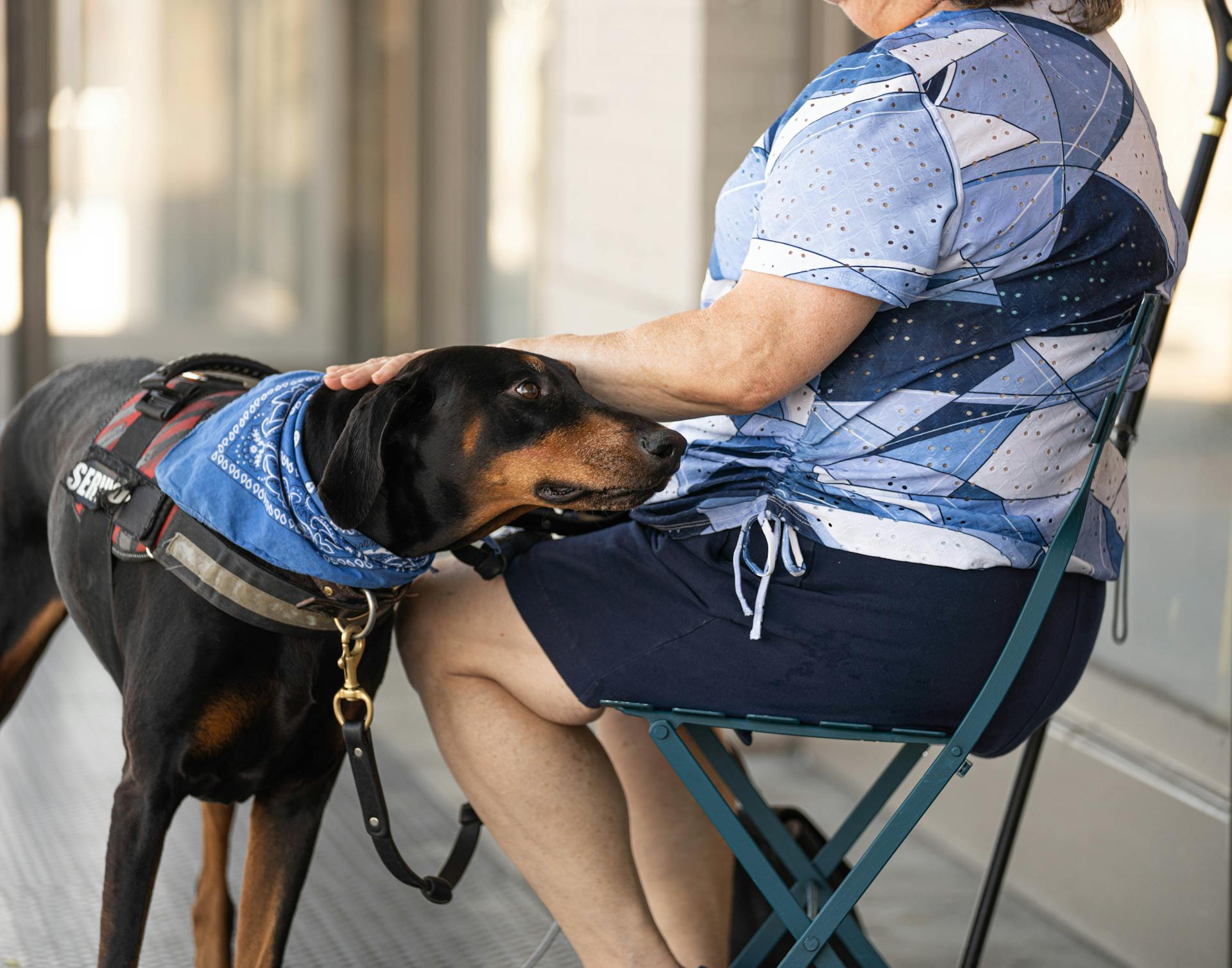
After their years of dedicated service, many ex service dogs are in need of a new home where they can continue to thrive.
Their retirement is often a bittersweet time for both the dog and their handler, as they've formed a strong bond over the years.
On average, a service dog works for around 7-10 years before they need to retire, which is roughly 1/3 to 1/2 of a dog's average lifespan.
Their age and experience make them a great fit for many families who are looking for a low-maintenance and loving companion.
See what others are reading: Are Service Dogs Registered
Retirement Options for Service Dogs
Some service dogs stay with their owners as pets and companions after retiring from their jobs, while others are placed in new homes where they can enjoy their golden years.
In most cases, guide dogs for people who are blind are placed in another loving home where they can retire, and another highly trained dog becomes the guide dog.
Expand your knowledge: Roselle Guide Dog
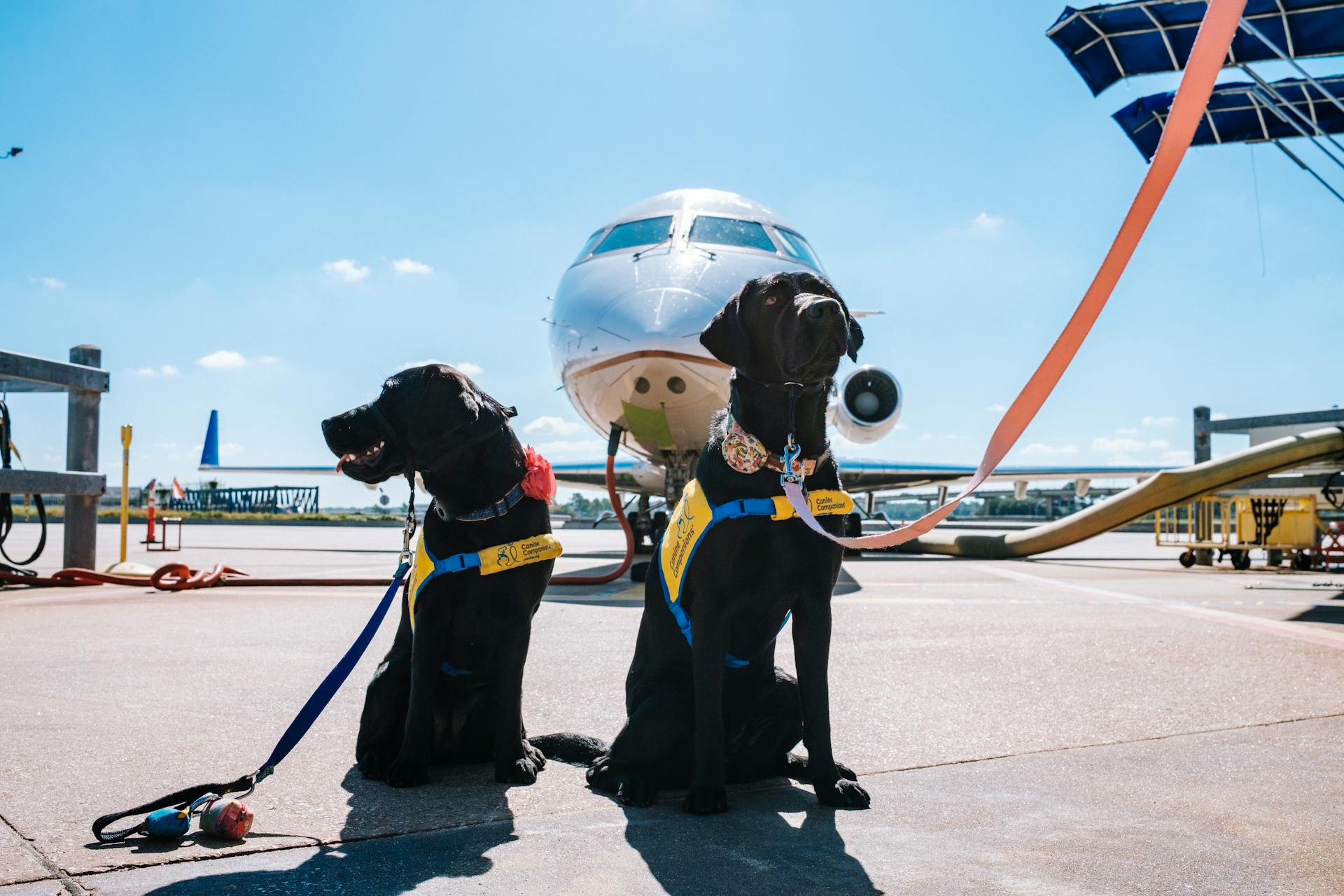
Clients choose not to keep their former service dog for various reasons, including not being able to afford the cost of caring for two dogs, living in a place where pets are not allowed, or not having enough space for both dogs.
The organization that trained the service dog often requires the dog to return to them when it's time to retire, where they determine if the dog remains a service dog or transitions to a therapy dog.
If a family placement isn't an option, the dog returns to the organization and enters an adoption program, where they are matched with a new family.
Organizations that work with retired service dogs often offer post-adoption support and transition assistance, which is essential for helping the dog adapt to their new life.
These organizations understand that dogs with jobs need a different approach when they make the crossover to being a pet, so they provide guidance and support to help the transition process go smoothly.
Readers also liked: Is an Emotional Support Animal an Assistance Animal
Adopting a Service Dog
Adopting a service dog can be a lengthy process, taking anywhere from a few weeks to several months. You'll need to research organizations specializing in adopting retired service dogs, such as Canine Companions, Guide Dogs of America, and Assistance Dogs International.
The approval process involves an application review, interview, and checking references. It can be a bit more rigorous than regular dog adoption, with multiple interviews and even a home visit. This is because service dogs require a stable environment from the start.
You might be waiting a while to bring home your new furry friend, as there are fewer retired dogs up for adoption each year. Clients and family or friends often have first dibs on keeping a retired service dog, which can make the waiting game even longer.
Suggestion: How to Adopt Failed Service Dogs
Transition Delay
Adopting a service dog can be a rewarding experience, but it's essential to be aware that the transition period for these dogs can be lengthy. A typical adoption process for a service dog can take around one week, but adopting a retired service dog can take several weeks or even months.
The approval process is more rigorous for adopting a retired service dog, including multiple interviews and a home visit. This is because these dogs require a stable environment from the start and need a longer transition period.
A retired service dog's transition to a new home can be difficult, especially if the dog has a strong bond with its previous handler. It can take time for the dog to form a new bond with you, but with patience, love, and care, it's possible.
The adoption process for a retired service dog can take anywhere from a few weeks to a year, depending on the organization and their waiting list. This is because these dogs have a unique set of needs and require a special type of care.
If this caught your attention, see: Home Euthanasia Service for Dogs
Adopting a Dog
Adopting a dog can be a wonderful experience, but adopting a retired service dog requires a bit more planning and patience. You'll need to research organizations that specialize in adopting retired service dogs, such as Canine Companions, Guide Dogs of America, and Assistance Dogs International.
On a similar theme: Retired Service Dogs to Adopt
The adoption process can take anywhere from a few weeks to several months, or even a year. This is because retired service dogs have a longer transition period and need a stable environment from the start.
You'll need to go through a rigorous approval process, including an application review, interview, and checking references. Some organizations may even require multiple interviews and a home visit.
If you're willing to wait, adopting a retired service dog can be a great option. These dogs are highly trained and well-behaved, making them a great addition to any family. They'll need a safe environment, opportunities to engage in activities, and plenty of love to help them transition to life with you.
One thing to keep in mind is that retired service dogs may have a harder time adjusting to life without a formal job. They may need time to adjust to being a pet and not a working dog. With patience, love, and care, they can thrive in their new home.
Failed Police Training or Adopt

If you're considering adopting a service dog, it's essential to know that failed police training is a common reason for these dogs to become available for adoption.
Failed police training is often due to the dog's inability to perform in high-stress situations, such as gunfire or loud noises.
Service dogs, on the other hand, are trained to assist individuals with disabilities, and they require a different set of skills and temperament.
These dogs are typically trained in tasks such as opening doors, picking up items, and providing balance support.
Failed police dogs can make excellent service dogs, as they already have basic obedience training and socialization.
A failed police dog may have been deemed unfit for duty due to a specific issue, such as a fear of loud noises or a lack of focus in high-pressure situations.
However, this doesn't mean they're not capable of forming strong bonds with their new owners and providing valuable assistance.
In fact, many people find that their service dogs, which were once failed police dogs, become their closest companions and most trusted friends.
Here's an interesting read: Police Service Dogs
Limited Access to Young Talent
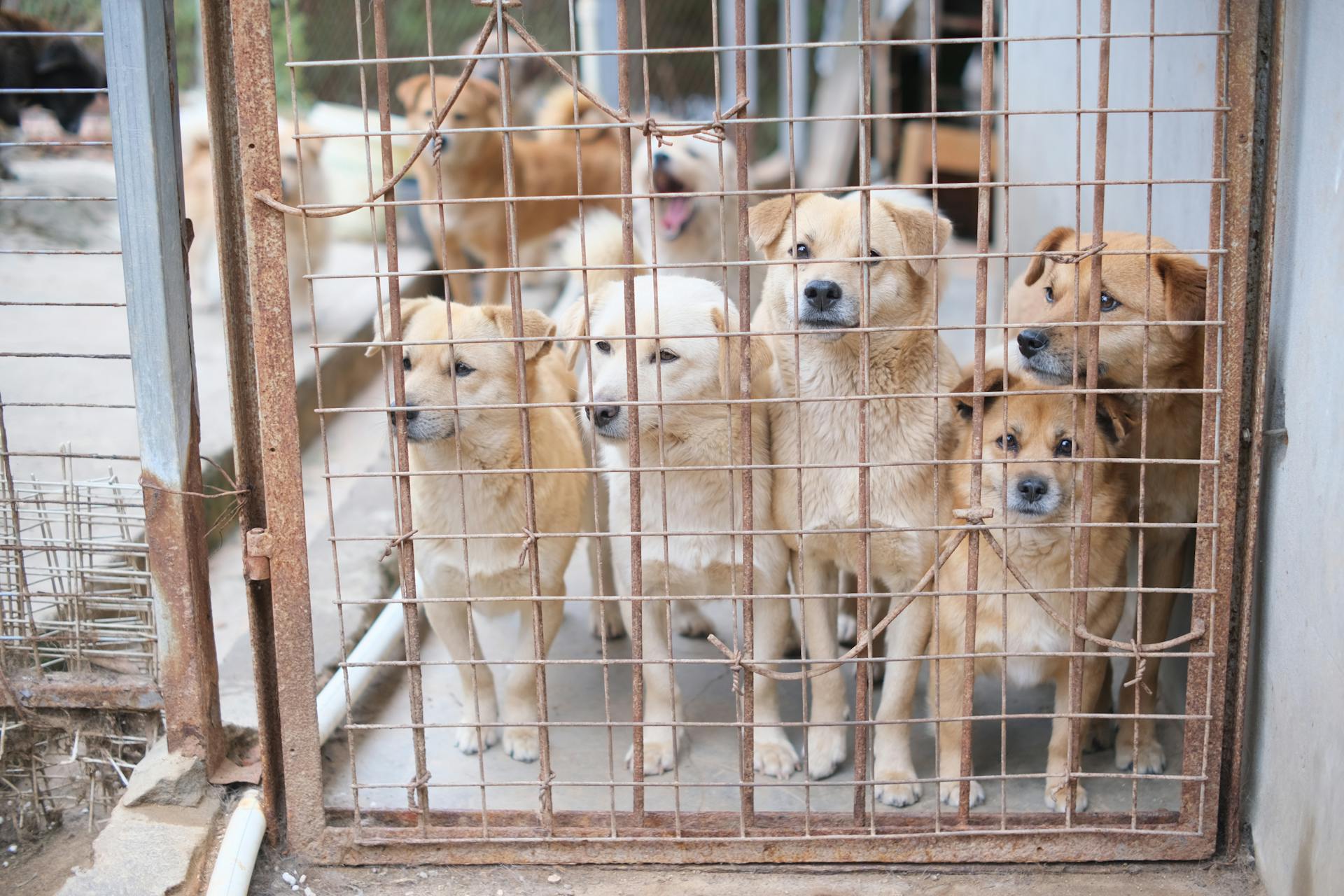
You'll likely be adopting an older dog if you choose to adopt a retired service dog. Typically, service dogs retire around 10 years old.
Their age range for retirement can be between 8 and 12 years, depending on the dog's health, mobility, and overall well-being. This means you won't have access to young dogs through this route.
Preparing a Home for a Service Dog
The adoption process for a retired service dog can take several weeks or even months, so it's essential to be patient and flexible. Depending on the organization, it could take a year before you bring home your new pet.
To ensure a smooth transition, research organizations specializing in adopting retired service dogs, such as Canine Companions, Guide Dogs of America, and Assistance Dogs International. These organizations will want to verify that your home and lifestyle are suitable for a retired service dog.
A stable environment is crucial for a retired service dog, so be prepared to provide a safe space for your new pet. This means having a routine and a consistent living situation that can help your dog feel secure.
See what others are reading: Pet Insurance for Service Dogs
Create a Quiet, Safe Space for Your Dog
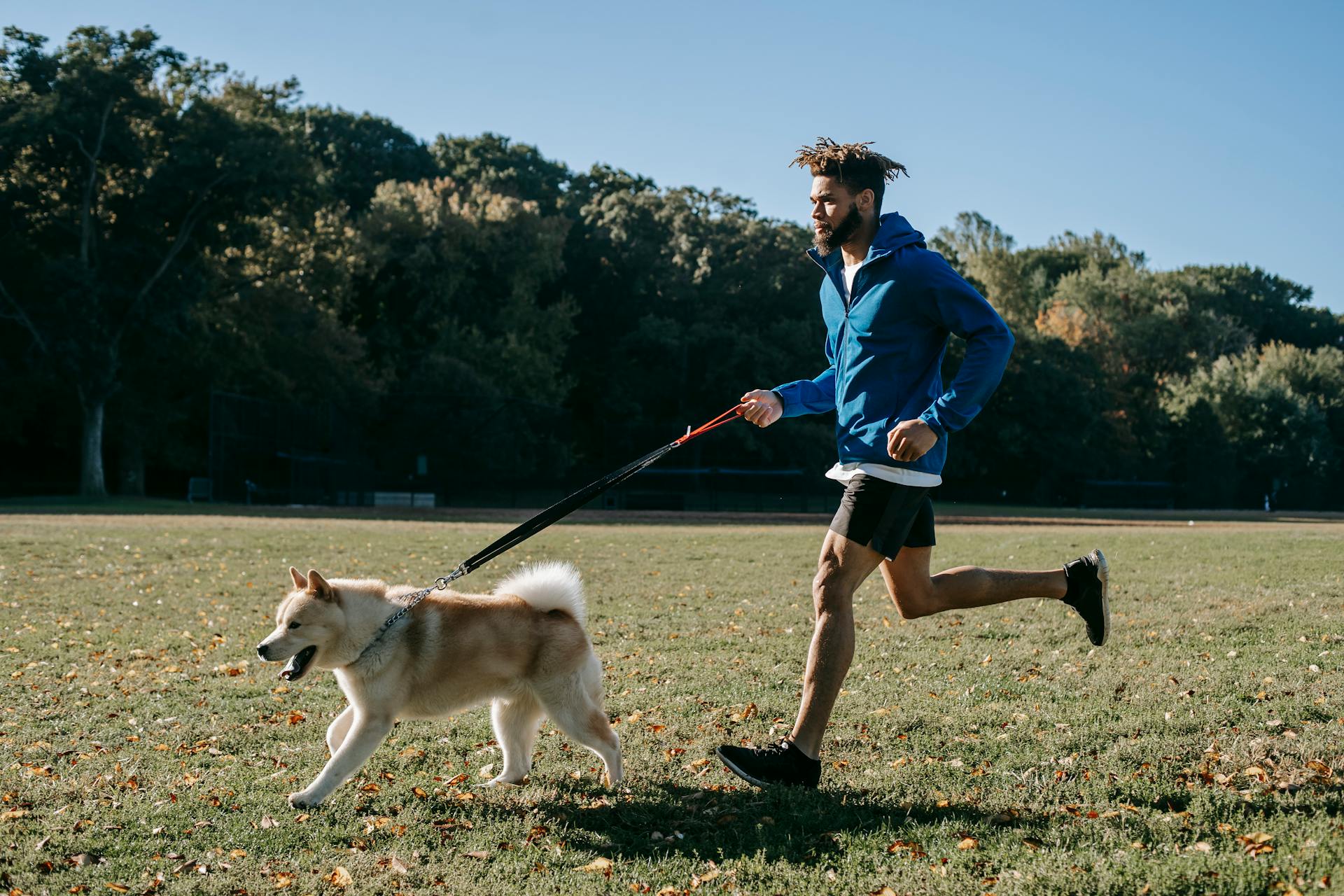
Creating a quiet, safe space for your service dog is crucial for their well-being and success.
A comfortable, safe place to relax is essential for your service dog. This can be a designated area in your home where your dog can retreat to when they need a little alone time.
If your service dog has mobility issues, consider purchasing a raised feeder or an orthopedic bed to make their life easier.
A treat mat that encourages licking can be a great way to help your dog decompress and release endorphins that help calm them.
Calming sprays or diffusers like Adaptil can also be effective in reducing your dog's anxiety and stress.
Readers also liked: Financial Help for Service Dogs
Ask About Previous Home's Bedding and Clothing
Including items from your service dog's previous home can help them transition to their new life with you. This might be a blanket, one of their former handler's T-shirts, a sheet, or a similar item that you can incorporate into their bed or sleeping area.
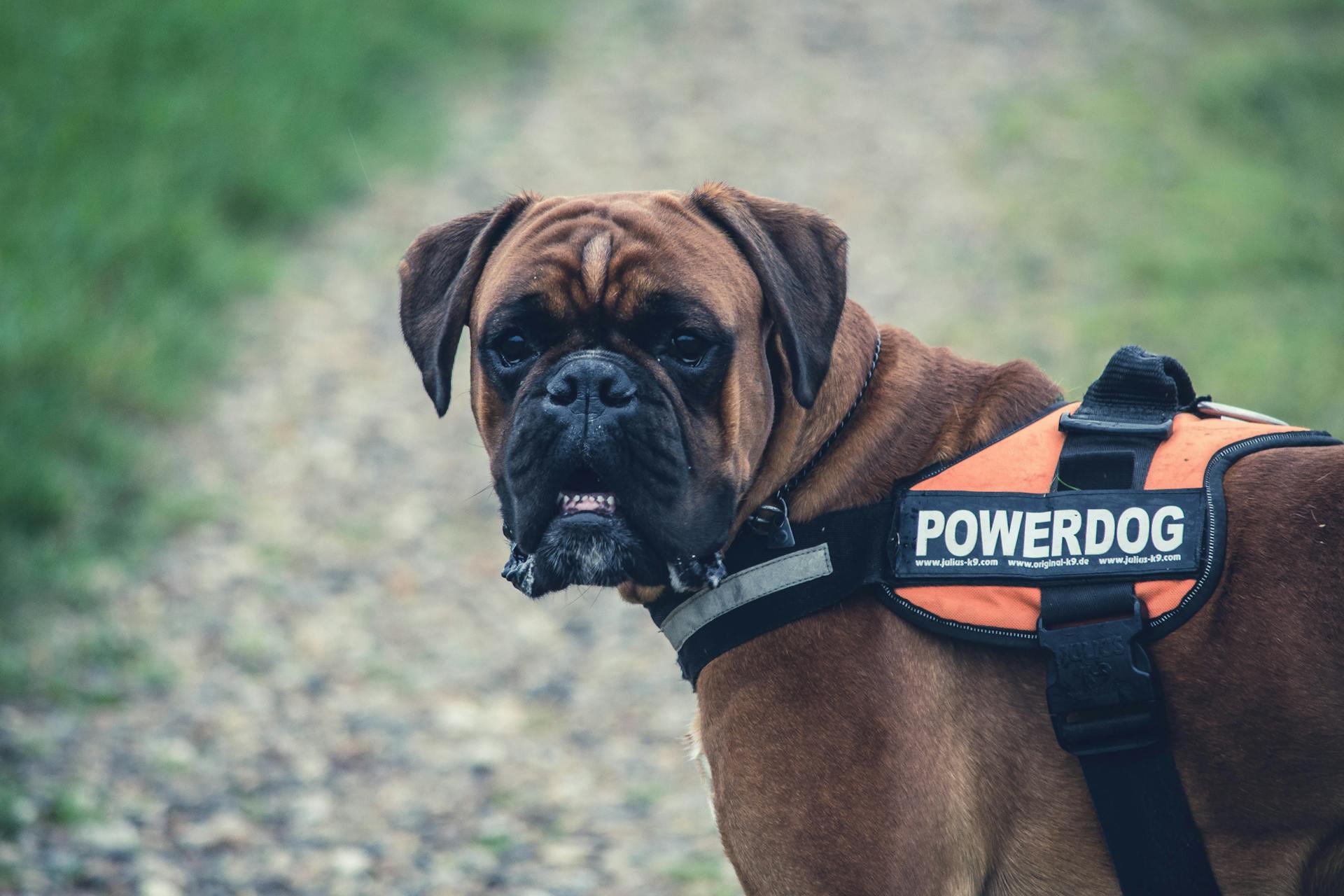
Having these familiar items can provide comfort and reassurance for your dog. Including items from their previous home can also help them feel more secure and reduce anxiety.
Asking about these items can be a great way to get started. You can ask the previous handler or their family if they have any items that you can use.
Caring for a Service Dog
Caring for a Service Dog is a big responsibility, but it's also incredibly rewarding. Moving into a new home is a stressful experience for any dog, especially a retired service dog.
Their behaviors, personality, and needs can be a learning curve for you as their new owner. It's essential to be patient and understanding as they adjust to their new environment.
Retired service dogs require regular exercise to stay healthy and happy. A daily walk or playtime is a must to keep them physically and mentally stimulated.
As you get to know your retired service dog, you'll learn their individual needs and personality quirks. For example, they may have specific habits or routines that help them feel secure.
Welcoming a Service Dog into Your Family
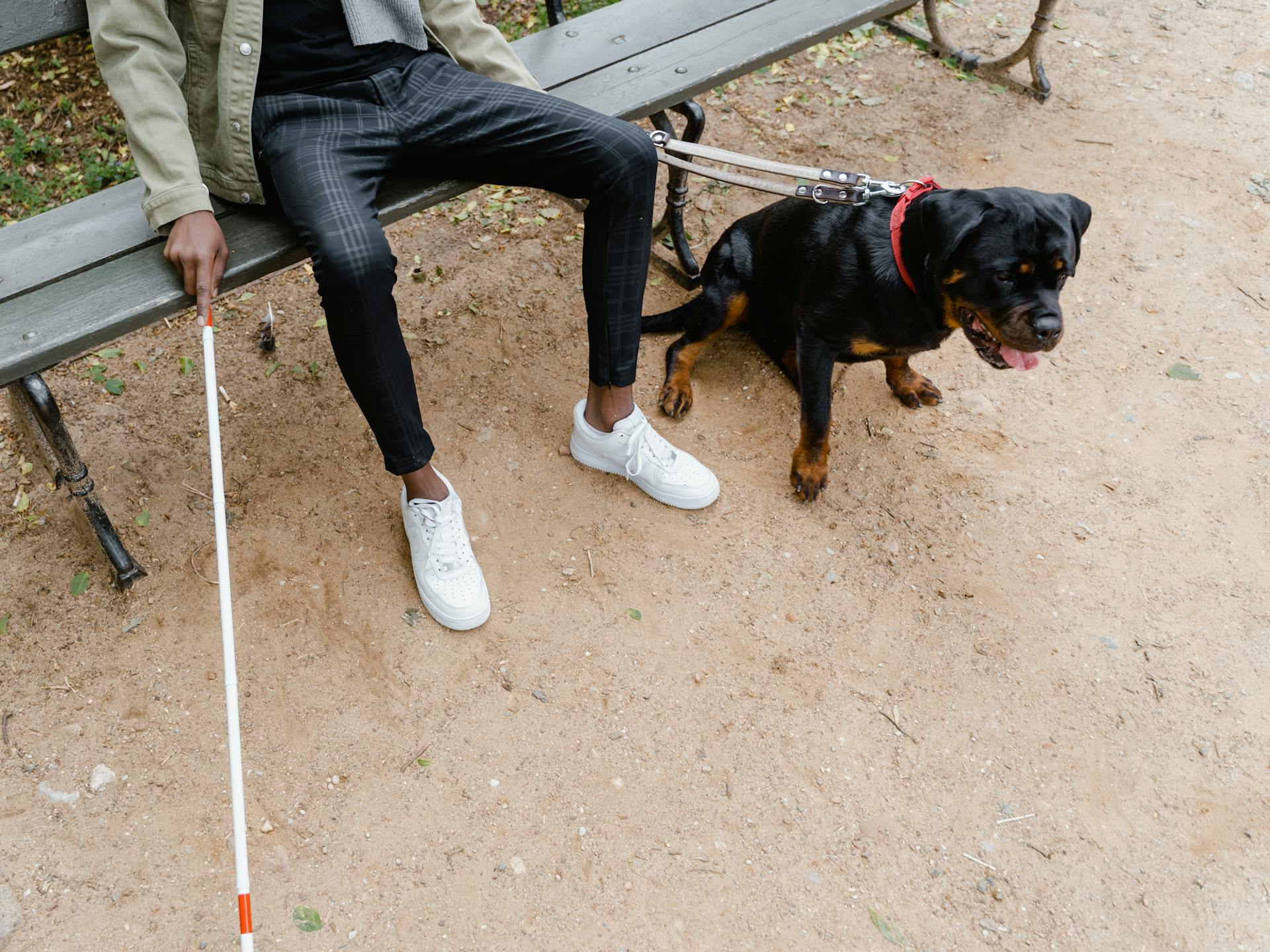
The adoption process for a retired service dog can take a little longer, typically between a few weeks to several months, depending on the organization and their waiting list. In some cases, it could take up to a year before you bring home your new furry friend.
Researching organizations that specialize in adopting retired service dogs is a crucial first step. Some examples include Canine Companions, Guide Dogs of America, and Assistance Dogs International.
The approval process is similar to regular dog adoption, but it tends to be a bit more rigorous, including multiple interviews and even a home visit. This is because retired service dogs require a stable environment from the start.
A safe environment, opportunities to engage in activities, and plenty of love are key to helping your new dog transition to life with you.
Explore further: Adopt Military Dogs
Frequently Asked Questions
Can someone ask me for papers on my service dog?
No, you cannot ask for documentation or proof of a service dog's registration or certification. Service dogs are protected under the law, and asking for such documentation is not allowed.
Sources
- https://bridgingapps.org/retired-service-dogs/
- https://www.rd.com/article/what-happens-to-retired-service-dogs/
- https://www.ranker.com/list/adopting-dogs-who-failed-police-training/donn-saylor
- https://neaterpets.com/blogs/news/adopting-retired-service-dog
- https://www.servicedogsva.org/service-dog-retirement
Featured Images: pexels.com


